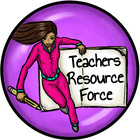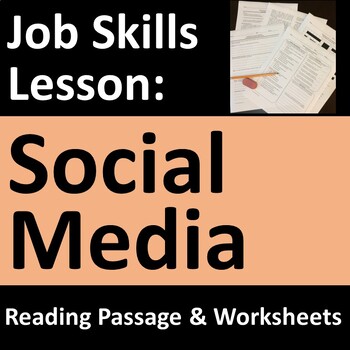High School | Lesson Plans | Social Media
Top 4 Social Media Lesson Plans for High School Students
With past experience in teaching, a couple of degrees in writing, and an upbringing immersed in medical jargon, Mike is positioned well to hear out the most common questions teachers ask about the iCEV curriculum. His goal is to write content that quickly and effectively answers these questions so you can back to what matters - teaching your students.
Whether you teach business education or computer applications, social media has become a key subject area for high school courses to explore. After all, successfully navigating social media can grant students many career advantages, while failing to do so can lead to all sorts of self-esteem and anxiety issues.
But how do you effectively teach the ins and outs of social media use? Where do you find the right lessons and activities for your classroom?
As a computer applications curriculum developer, high school teachers often approach AES wondering how to properly explore social media in their courses. In response, we’ve gathered together some of the strongest lessons out there to get you started.
In this article, you’ll discover 4 of the best social media lesson plans and activities you can use in your classroom:
- Social Media Curriculum from Common Sense Education
- Social Media Lessons from Career and Employment Prep
- Social Media Lesson from Teachers Resource Force
- Social Media Lesson from Room 213
By the end of this article, you’ll have a greater understanding of each of these resources so that you can choose the best ones for your students.
1. Social Media Curriculum from Common Sense Education

Common Sense Education is a nonprofit organization dedicated to helping teachers, students, and parents learn more about technology and media so that they can make the best digital decisions for themselves.
With their Digital Citizenship Curriculum, they provide course material teachers can use to educate students on responsible media and internet use. Many of these lessons are designed specifically for high schoolers.
What Do These Social Media Lessons Look Like?
Common Sense Education’s Digital Citizenship Curriculum has several lesson plans dedicated to safe and effective social media use. Some of these lessons include:
- Social Media and How You Feel
- Curated Lives
- My Digital Life is Like…
- Can Media Be Addictive?
- How Young Is Too Young for Social Media?
These lessons are composed of various resources like slides, videos, handouts, and activities, providing a diverse experience to engage students.
In addition, these lessons each tend to take about 50 minutes of class time, which makes them well-suited to standard high school course periods.
What Do These Social Media Lessons Cost?
Common Sense Education’s lesson plans are free, though you may have to register on their website to gain full access to the material.
Who Are These Social Media Lessons Intended For?
Common Sense Education’s resources are a great fit for high school teachers who need a week or two of solid social media lesson plans to teach their course. It helps that the curriculum is free, too, which means you only need to invest a little bit of time to get your hands on this material.
If you need robust, free course material to teach a unit on social media to your high schoolers, then Common Sense Education’s curriculum may be the right fit for you.
2. Social Media Lessons from Career and Employment Prep
TeachersPayTeachers (TpT) is a digital marketplace where teachers can buy educational resources to teach almost any age range, pre-K to adult education.
One of the providers on TpT is Career and Employment Prep, which offers resources based around CTE, career readiness, and various other business-centric skills.
They offer a pair of resources to teach social media, including a Workplace Social Media Lesson and a Social Media Safety and Skills Activities Bundle.
What Do These Social Media Lessons Look Like?
Career and Employment Prep focuses its resources on helping students benefit professionally from social media.
For instance, the Workplace Social Media Lesson is designed to educate students on how to control their online presence and use it to gain better employment opportunities. Its content includes reading selections, various kinds of quiz questions, a crossword puzzle, and more.
Similarly, the Social Media Safety and Skills Activities Bundle is intended to warn students of the dangers of irresponsible social media use. This resource contains individual activities like writing prompts, puzzles, escape games, and word searches.
What Do These Social Media Lessons Cost?
The list price for the Workplace Social Media Lesson is $2.00, while the Social Media Safety and Skills Activities Bundle’s list price is $7.00.
It’s important to keep in mind, too, that because TpT is a digital marketplace, prices may vary over time depending on the provider and the discounts they may offer.
Who Are These Social Media Lessons Intended For?
Career and Employment Prep’s social media resources have a very practical, hands-on bent. They’re designed mainly as activities students can complete to educate themselves on using social media as a tool to showcase their professionalism.
If you need strong activities to demonstrate to your high schoolers how social media can be used to enhance their careers, then Career and Employment Prep’s resources might be a good choice for your class.
However, if you need more comprehensive or well-rounded lesson plans for your course, it’s probably best you look elsewhere.
3. Social Media Lesson from Teachers Resource Force

Another prominent provider on TpT is Teachers Resource Force, which offers hundreds of resources centered around subjects like math, English language arts, digital citizenship, and more.
One of the resources they offer is the Social Media and Mental Health Lesson, which approaches social media from the angle of its effect on self-esteem and mental health.
What Does This Social Media Lesson Look Like?
The Social Media and Mental Health Lesson explores social media through the lens of social and emotional learning. It asks students to think about why they use social media, why others obsess over it, how it can affect mental health, and more. All of this is intended to grant students further insight into using social media in a healthy way.
Some of the materials within the lesson include a customizable PowerPoint presentation, discussion cards, a scenario analysis activity, and several graphic organizers to help students take notes.
All in all, these materials will last you for about three hours of class time, which should cover the better part of a week—enough for a small unit on social media.
What Does This Social Media Lesson Cost?
The Social Media and Mental Health Lesson costs $8.00 on TpT.
It’s also important to remember that this price may fluctuate here and there depending on discounts or other factors.
Who Is This Social Media Lesson Intended For?
Teachers Resource Force’s social media lesson is helpful for teachers who want to approach this digital citizenship subject from an empathetic mental health perspective. It is structured around educating students on the health risks of social media so that they can use it more responsibly.
Another point to keep in mind is that this resource is designed for early high school, and may not be appropriate for 11th or 12th graders.
If you need a strong, week-long lesson that educates 9th and 10th grade students on the mental health risks associated with social media use, then this resource will likely serve you well.
4. Social Media Lessons from Room 213
Room 213 is another well-known provider on TpT, offering hundreds of resources that cover humanities topics like literature, social studies, and history.
One of the resources they offer is Social Media and Our Fear of Missing Out, a lesson plan that challenges students to consider whether they or their peers are addicted to social media.
What Does This Social Media Lesson Look Like?
The Social Media and Our Fear of Missing Out lesson is designed to get students to think critically about their social media habits and what part FOMO (Fear of Missing Out) may play in them.
The lesson explores this topic through a 12-part slide show, online articles, TED talks, and YouTube videos that showcase the risks involved with social media. After taking in the information from these sources, students take an active role in the lesson by conducting their own experiments and writing a reflection piece on what they’ve learned.
Altogether, these materials should last for 2-3 hours of total class time—enough for a solid few days’ worth of lessons on social media.
What Does This Social Media Lesson Cost?
The Social Media and Our Fear of Missing Out lesson costs $3.50 on TpT.
Like other TpT resources, this may vary depending on provider discounts.
Who Is This Social Media Lesson Intended For?
Room 213’s social media lesson plan will work well for teachers who need engaging materials to get their students to think deeply about social media and the psychology surrounding it. Its price makes this an affordable option for those who solid material for a short unit on social media.
If you need a few days’ worth of engaging lessons designed to get your students thinking critically about their social media habits, then this resource will likely work well for you.
Need to Teach More Digital Skills?
Depending on how they learn it, social media can either be a valuable tool for your students or a source of anxiety and discomfort in their lives. That’s why you need the right material to teach it, so your students can walk away not afraid, but empowered.
In this article, you’ve learned about some of the top lesson plans out there for teaching social media to high school students. Choosing one of these for your class will go a long way toward ensuring your students are a step ahead of the curve.
However, social media is only one aspect of true digital literacy. These days, if you want your students to succeed in a fully digitized world, they need a complete education on topics like digital footprints, protecting their information online, online communication, and more.
If you want to give your students a more well-rounded digital education, check out this article on how to teach digital literacy skills. This article will guide you through the skills your students need to learn to become masters of the digital world:
.jpg)



